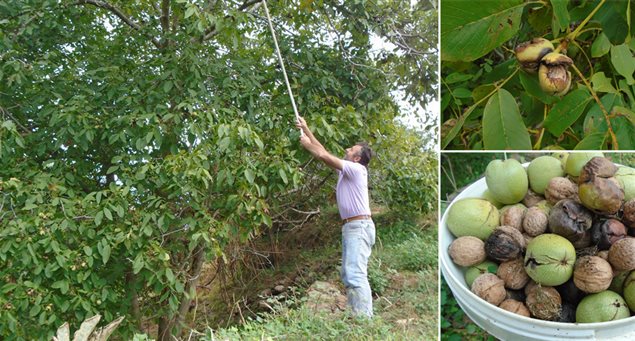
It is October and Giorgos Komiaki (as he is known on Facebook) has set up his camera up on a nearby rock. He sets it on auto-shoot. Hurriedly he takes a long bamboo stick and gently shakes the branches of the walnut tree that is part of his family tree for generations.
Up in the northern mountainous region of Naxos, about 30-35 kilometres from busy downtown, is a village known as Komiaki, or Koronida.
Ask any local and they’ll tell you it houses the only gas station in the region for miles or in this case, kilometres.
There we met Giorgos. Owner of the petrol station and avid Facebook user, he enjoys documenting the daily life of his village that today has a population of about 250 compared to the 2,000 in the days of his grandfather.
Giorgos Komiaki as he is known to his Facebook friends, does his best to preserve the traditions that once provided a means of income for families in the region.
It is October and Giorgos Komiaki has set up his camera up on a nearby rock in a field near the station. He sets it on auto-shoot. Hurriedly he takes a long bamboo stick and gently shakes the branches of the walnut tree that is part of his family tree for generations.
“The walnut is ripe when you can see the nut inside the green husk,” he explains. “Eventually the nut falls to the ground ready to be collected.”
“My grandfather had 15 walnut trees,” he continues. “Selling walnuts was his basic source of income, enough to provide for his family. In the old days, there were a lot more trees,” he explains, “because more of the natives cultivated the land.”
Today, George has 2-3 walnut trees that he tends to as a hobby, gathering 10-15 kilos of the nutritious nut compared to the 500 kilos that his grandfather gathered in the 50s.
“They last until the Spring,” he explains. “I keep them for personal consumption for family and friends. We like to use them as an ingredient and garnish in desserts.”

